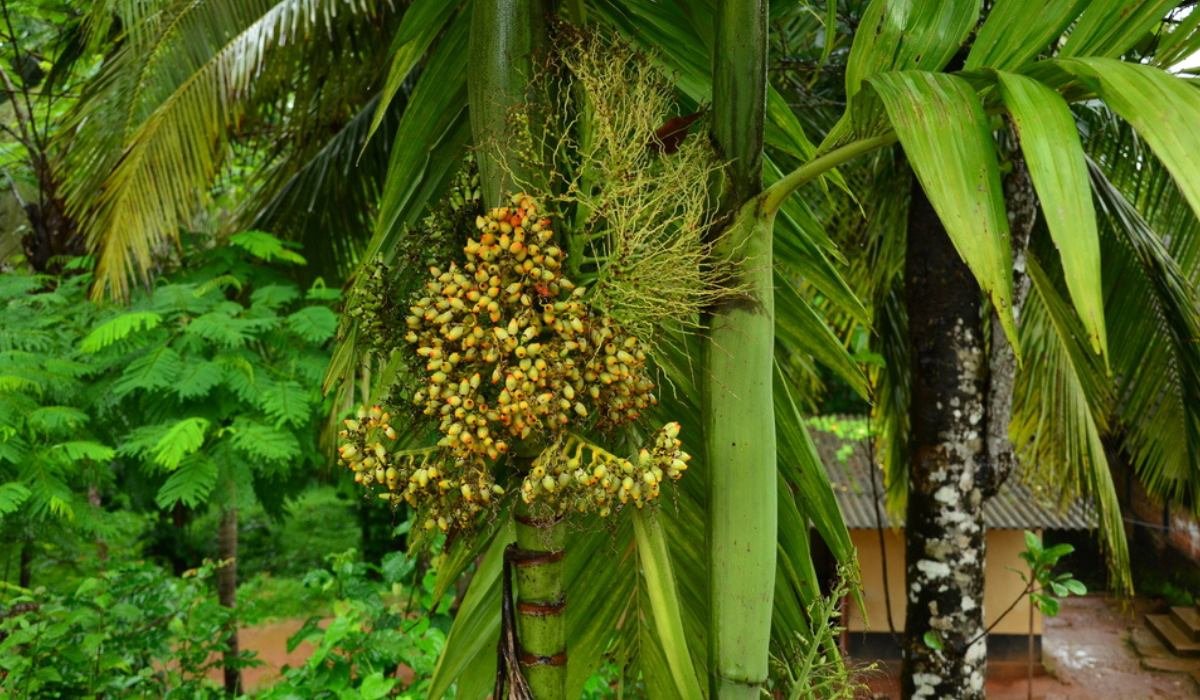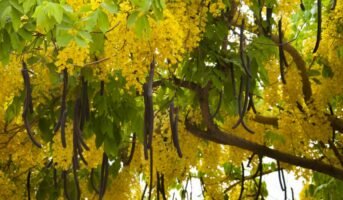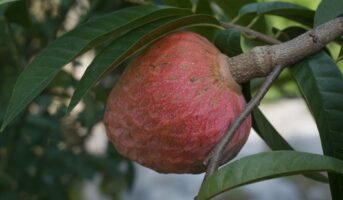Areca nut palm, also known as betel nut palm or supari tree, is a tropical tree native to India and the South and Southeast Asian regions. It is widely cultivated for its edible nuts, harvested from the tree’s fruit. Areca nuts are commonly consumed in many parts of the world, either on their own or in a mixture of other ingredients such as tobacco, lime, and other herbs. The areca nut is known for its mild stimulant effects, which are caused by alkaloids such as arecoline in the nut. It is also used in the production of betel quid. It is also used in traditional medicine in some cultures for its astringent and digestive properties.
In addition to its use as food and medicine, the areca nut palm is also grown as an ornamental plant due to its attractive appearance and ability to thrive in warm, humid climates. The tree is known for its ability to withstand drought and saltwater, making it well-suited to growing in coastal areas.
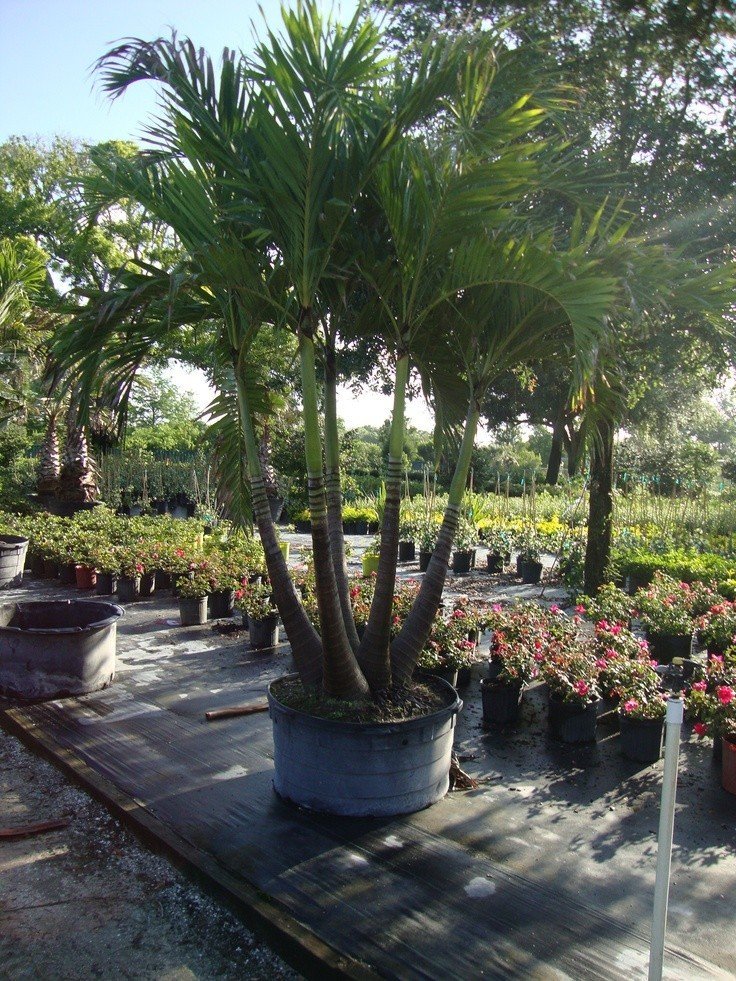
Source: Pinterest
know about: khair tree
Supari tree: Key facts
| Name | Areca nut palm |
| Common names | “Betel nut palm”, “Supari tree”, “Areca palms” or “Dypsis lutescens” |
| Family | Arecaceae |
| Origin | South and Southeast Asian regions |
| Soil | Light (sandy), medium (loamy) and heavy (clay) soils |
| Temperature | 18-26 °C |
| Sunlight | Bright, indirect light |
| Flowers | Small, yellow or orange |
| Leaves | Long and narrow |
| Indoor/Outdoor | Both outdoors and indoors |
See also: Coconut tree: Facts about the coconut bearing palm
Supari tree: Varieties and physical description
The Areca nut palm (also known as the betel nut palm) is a tall and slender tree that grows up to 20 metres in height. It has a straight, smooth trunk and a crown of feathery fronds. The leaves of the Areca nut palm are long and narrow, growing up to 3 metres in length. The tree produces small, yellow or orange flowers that grow in clusters, and the fruit is a nut that grows in a woody capsule. The nut is oval-shaped and has a hard, brown shell about 5–10 cm in diameter. The nut contains a single seed surrounded by a white, fleshy interior often used as a chewing substance. The nuts are often chewed for their stimulant effects and are a common ingredient in many traditional medicines.
Areca nut palms, also known as betel nuts, are tropical palm trees native to South and Southeast Asia. There are several varieties of areca nut palms, including:
-
Areca macrocalyx or Highland betel nut
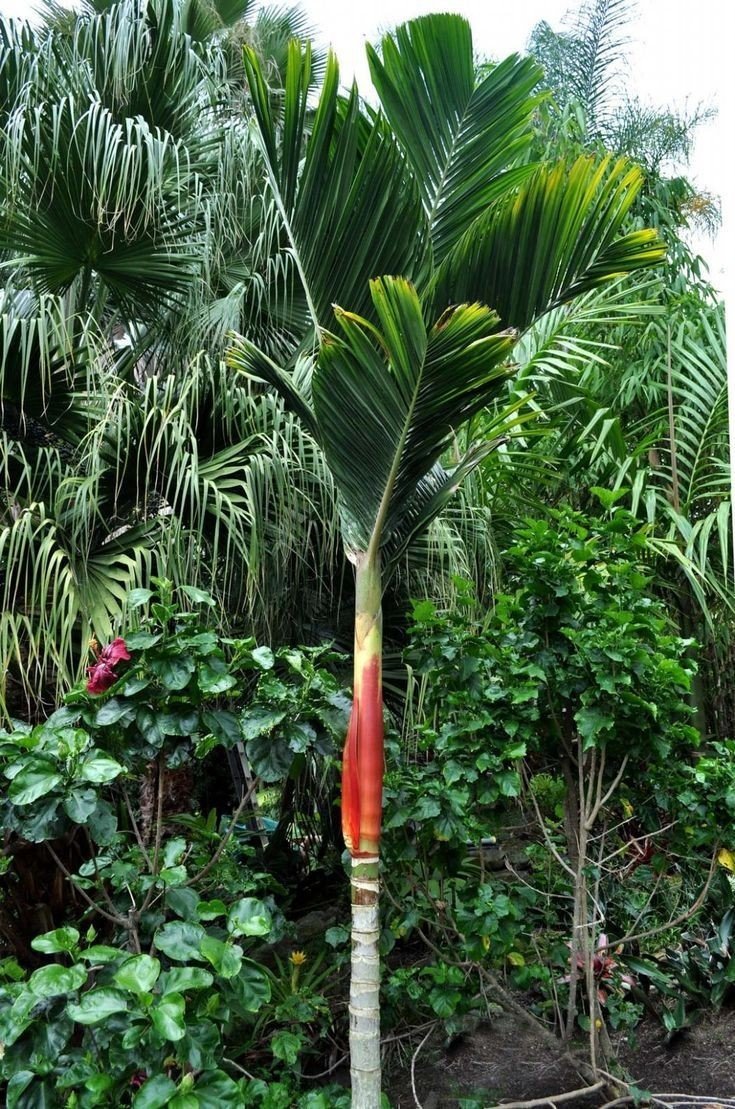
Source: Pinterest
This is the most widely grown variety of Areca nut palm and is native to India and other South Asia. The nuts of this variety are small and round, with a bright red outer husk.
-
Areca catechu
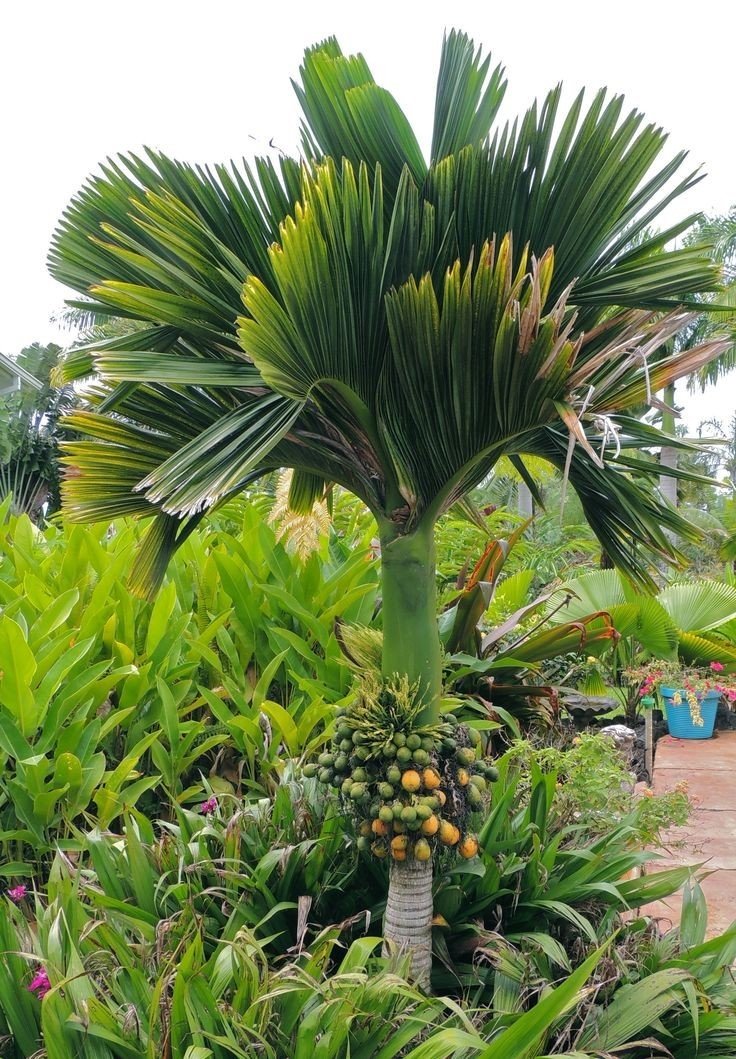
Source: Pinterest
It is the most widely cultivated variety of areca nut palms and is native to India and Bangladesh. The nuts produced by this variety are oval-shaped and have a yellow or brown outer husk.
-
Areca vestiaria

Source: Pinterest
This variety is native to the Philippines and is known for producing large, oval-shaped nuts with a yellow or brown husk.
-
Areca triandra

Source: Pinterest
Areca triandra is a palm tree species native to tropical regions of Southeast Asia, including Indonesia, Thailand, and Malaysia. It produces clusters of yellow flowers that give way to small, round fruit containing the areca nuts.
-
Areca lutescens
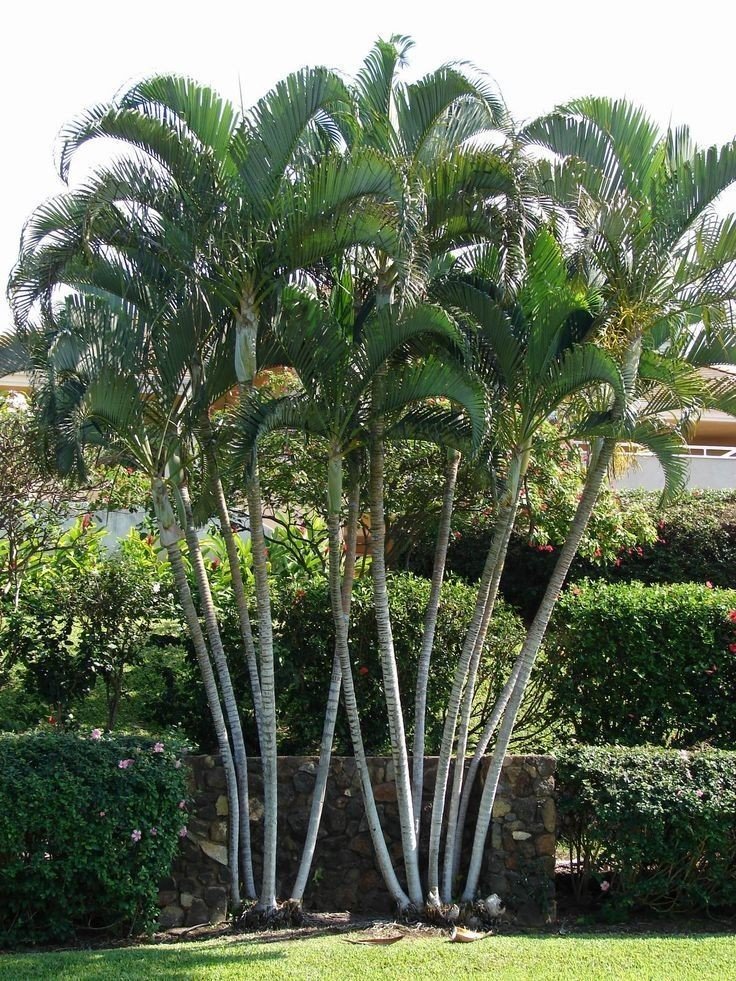
Source: Pinterest
Areca lutescens is a species of palm tree that is native to Madagascar. It is also known as the “yellow butterfly palm” due to the shape of its leaves, which resemble butterfly wings. It produces clusters of small, yellow flowers followed by orange-yellow fruit.
Supari tree: Growing tips
The Areca nut palm, also known as the betel nut palm or Areca catechu, is a tropical tree native to the rainforests of South and Southeast Asia. To grow an Areca nut palm, follow these steps:
- Select a location with good soil drainage and enough sunlight. Areca nut palms prefer a sunny spot but can also tolerate partial shade.
- Plant your Areca nut palm in a hole twice as wide and deep as the root ball.
- Water the palm regularly, keeping the soil evenly moist but not soggy.
- Fertilise your Areca nut palm with a balanced fertiliser every month or two during the growing season.
- Prune off any dead or damaged fronds to maintain a healthy appearance.
- Protect your Areca nut palm from cold temperatures, as it is not tolerant of frost. If you live in a region with cold winters, consider growing your Areca nut palm in a container that can be brought indoors when temperatures drop.
With proper care, your Areca nut palm can grow into a large, attractive tree well-suited to tropical and subtropical climates.
Supari tree: Maintenance tips
Here are some care tips to help your Areca nut palm thrive:
- Light: Areca nut palms prefer bright, direct sunlight.
- Water: Water your areca nut palm regularly, evenly moistening the soil. Avoid letting the soil dry out completely, as this causes the leaves to turn yellow and dry up. Also, be careful not to water too much, as this can lead to root rot.
- Temperature: Areca nut palms prefer warm temperatures and high humidity.
- Soil: Use a well-draining potting mix for your Areca nut palm. A blend of peat moss, perlite, and coconut coir works well. The palms prefer a slightly acidic soil pH of around 6.0 to 6.5.
- Fertiliser: Fertilise your areca nut palm every month during the growing season (spring and summer) using a balanced liquid fertiliser. Reduce the frequency to every other month during the fall and winter.
Supari tree farming: Tips and tricks for a successful harvest
Supari tree is harvested by getting the kernel from the raw fruit. These are further processed to produce betel nuts or supari.
- For this, firstly the raw fruit are plucked from the Betel nut tree.
- Next, the fruit are peeled to get the kernel. Once the kernel is obtained, they are boiled for over 12 hours. This is followed by sun-drying them for around 2 weeks. The final product is the betel nut.
The mystical properties of the Supari tree
- Nutritional benefits: The nuts produced by the areca nut palm are a good source of protein and other nutrients and have been traditionally used as a dietary source in many parts of the world.
- Environmental benefits: The areca nut palm is a fast-growing tree that can be grown in various soil types, making it a valuable plant for reforestation and land rehabilitation projects.
- Economic benefits: The areca nut palm is an important cash crop in many tropical countries, providing a source of income for farmers.
- Oral hygiene: The areca nut is believed to have astringent properties, which may help reduce mouth bacteria and prevent tooth decay.
- Stimulation: The areca nut contains small amounts of caffeine, which can provide a mild stimulant effect. Some people chew the areca nut to increase alertness and focus.
- Relaxation: The areca nut is also believed to have mild sedative properties, which may help to reduce anxiety and promote relaxation.
It’s worth noting that the areca nut can also have adverse effects on health, including an increased risk of oral cancer and other health problems. It’s important to use caution when consuming the areca nut and to be aware of the potential risks.
The cultural significance of Supari in Indian society
In many parts of Asia and the Pacific, chewing the areca nut is a traditional social activity often associated with hospitality and friendship.
In Hinduism, supari is believed to be auspicious and has an important place in religious ceremonies and rituals. Supari is offered to deities during puja and other important events like weddings, grihapravesh etc. In some parts of India, Supari is given along with Betel leaves and this denotes a symbol of love and respect.
Supari is also an important part of social and cultural practices in some communities. For example, in some parts of India, it is customary for a groom’s family to offer supari to the bride’s family as a symbol of acceptance and respect. In other communities, supari is given as a gift to friends and family during festivals and other celebrations.
Supari tree: Toxicity
The areca nut, also known as the betel nut, is the seed of the areca palm tree. It is commonly chewed for its stimulating effects but can have negative health consequences when consumed in excess. The areca nut contains arecoline, which can cause side effects such as dizziness, tremors, and increased heart rate and blood pressure.
Long-term use of areca nuts has also been linked to an increased risk of cancer, particularly of the mouth and oesophagus. It can also cause other problems, such as ulcers, bleeding gums, and tooth loss. If you are concerned about the health effects of areca nuts, you should talk to a doctor or healthcare professional.
FAQs
What is the areca nut palm?
The areca nut palm (Areca catechu) is a type of palm tree native to tropical regions of Asia. It is also known as the betel nut palm or the pinang palm.
What is the areca nut used for?
The areca nut palm produces the areca nut as its seed. It is widely consumed in many parts of Asia, where it is traditionally chewed with betel leaves as a stimulant. The areca nut is also used in some traditional medicines and the production of natural dyes.
How do you grow areca nut palms?
Areca nut palms are tropical trees that prefer warm, humid conditions and well-draining soil. They can be cultivated from seeds or young plants, and a site with lots of sunlight is ideal for planting them. Areca nut palms require regular watering, but they should not be overwatered.
How do you care for areca nut palms?
To care for areca nut palms, provide them with regular watering and fertilisation, and trim off any dead or damaged fronds as needed. They may also benefit from the application of a micronutrient mix to help them grow strong and healthy.
Are areca nuts harmful?
The areca nut can have adverse health effects when consumed in large amounts or regularly. It increases the chance of several diseases, as well as oral cancer. Using caution when consuming areca nuts and following all recommended dosage guidelines is essential.
Housing News Desk is the news desk of leading online real estate portal, Housing.com. Housing News Desk focuses on a variety of topics such as real estate laws, taxes, current news, property trends, home loans, rentals, décor, green homes, home improvement, etc. The main objective of the news desk, is to cover the real estate sector from the perspective of providing information that is useful to the end-user.
Facebook: https://www.facebook.com/housing.com/
Twitter: https://twitter.com/Housing
Email: editor@housing.com
